I recent brewed up a pilot batch for an American Lager, in preparation for a larger scale brew of this style. For my pilot batches, I typically take the Brulosophy short and shoddy approach, in an effort to save some valuable time.
In this case, my fermentation temperature control was thrown to the wind, and I fermented this American Lager yeast warm. A lot warmer than planned.
As I saw my fermentation temperature reach the 70 degree Fahrenheit mark at peak fermentation, I freaked! Not sure of what the outcome would bring, I decided to ride it out.
So what’s a beer taste like using an American Lager yeast that was fermented a bit on the warm side?
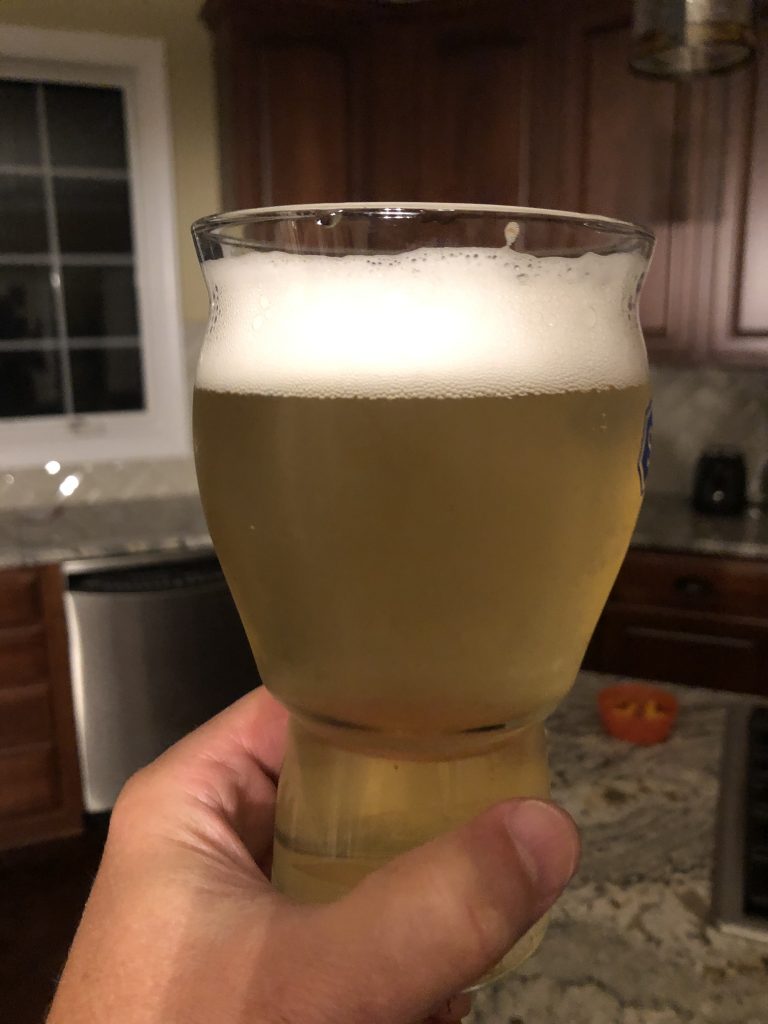
I Lost My Fermentation Chamber
First off, I get fermentation temperature control. I purchased a chest freezer back in early 2020 that I could use for my fermentation chamber. After a few uses, it was working out great.
Then the pandemic hit, COVID 19, and I had to give up my fermentation chamber to freezing food. 5 months later we’ve got rather accustomed to having another freezer in the house, and I’ve lost my ability to cold crash and lager.
No problem right, just go get yourself another chest freezer. Well that’s another problem, there’s a run on chest freezer’s and everywhere you look they are out of stock.
Anyway, I need to brew a freaking lager for an upcoming get away, and I wanted to try out an American Light Lager. Hence the pilot batch.
While I knew that I would be fermenting my American Lager yeast on the warm side, I didn’t anticipate it getting as warm as it did. My basement is normally on the cool side, and I’ve fermented warm lager’s without any additional cooling, simply using the ambient temperature in the basement. It hasn’t been a problem keeping my beer fermenting in the lower 60’s, which would be acceptable to me for this pilot batch.
However, given the warm summer we’ve been having here in Michigan, that didn’t really work out as planned.
American Lager Yeast Fermented Warm
Back to the beer and problem at hand. I whipped up a quick recipe using Brewer’s Malt and a combination of Flaked Rice and Flaked Maize.
Recipe Details
| Batch Size | Boil Time | IBU | SRM | Est. OG | Est. FG | ABV |
|---|---|---|---|---|---|---|
| 2 gal | 30 min | 12.2 IBUs | 2.7 SRM | 1.040 | 1.006 | 4.4 % |
| Actuals | 1.044 | 1.007 | 4.9 % | |||
Fermentables
| Name | Amount | % |
|---|---|---|
| Brewers Malt 2-Row (Briess) | 3 lbs | 70.59 |
| Rice, Flaked (Briess) | 14 oz | 20.59 |
| Corn - Yellow, Flaked (Briess) | 6 oz | 8.82 |
Hops
| Name | Amount | Time | Use | Form | Alpha % |
|---|---|---|---|---|---|
| Tettnang | 0.54 oz | 30 min | First Wort | Pellet | 3.5 |
Yeast
| Name | Lab | Attenuation | Temperature |
|---|---|---|---|
| American Lager Yeast (WLP840) | White Labs | 78% | 50°F - 55°F |
Notes
| Water Profile (American Lager Profile) Ca: 15 Mg:5 Na: 0 CO4: 38 Cl: 14 |
All went well with the brew day, with the exception of exceeding my Brewhouse efficiency, given this was my first quick batch on my new setup.
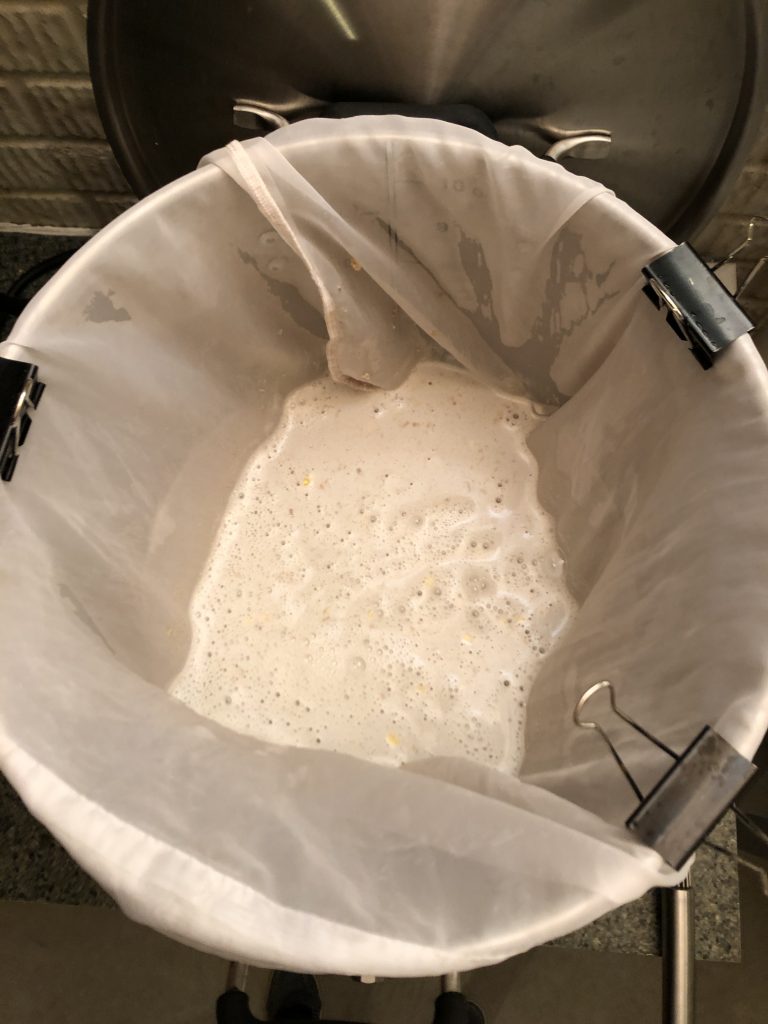
Before racking to my Anvil fermenter, I was able to chill my wort down to the low 70’s. About right, given my groundwater at this time of the year is in the low 60’s.
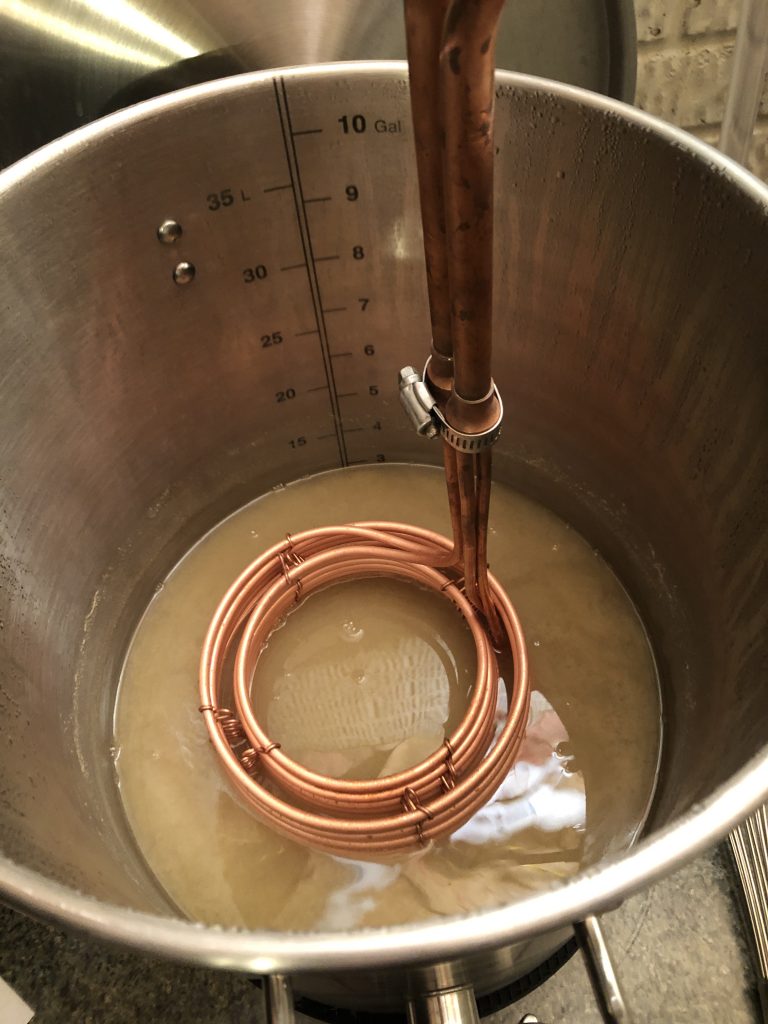
As I said previously, I lost my fermentation chamber, so I had to rely on the ambient temperature in my basement to chill as much as possible before pitching my yeast. I wasn’t too concerned, as I’ve been able to chill previous batches in my basement to the low 60’s, and that would get me close enough for this BrewGround.
I knew there was going to be a problem when I checked my fermenter a good 8 hours after racking. The internal wort temperature was sitting at 69 degrees Fahrenheit. Way too warm to be pitching any lager yeast.
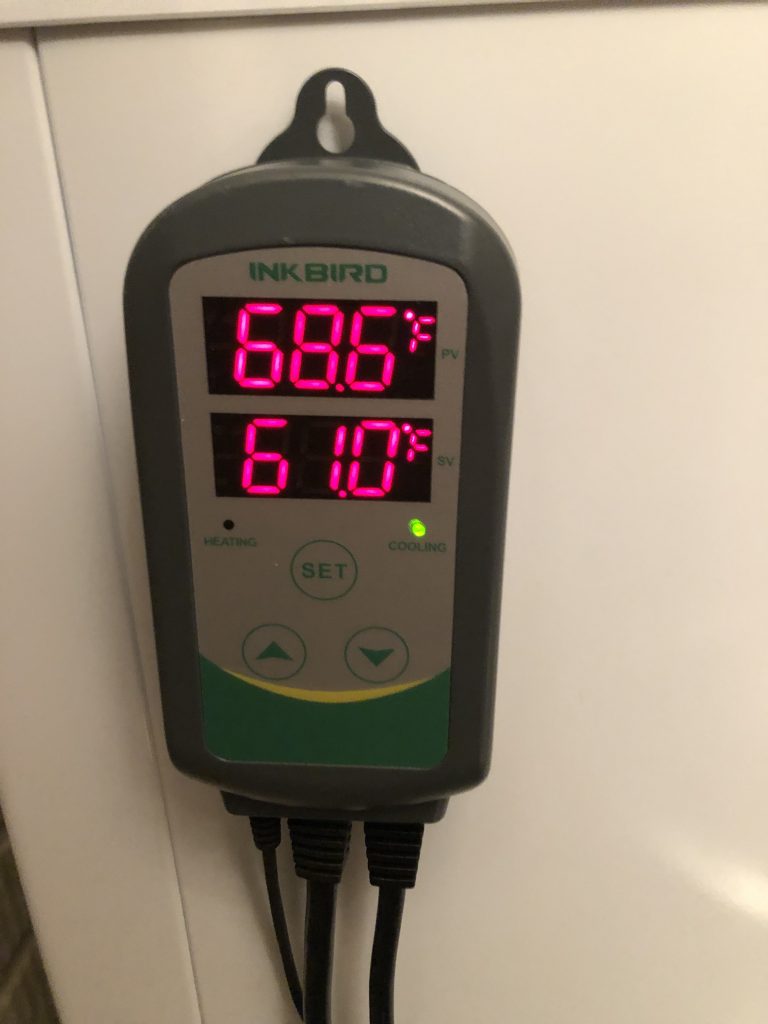
Not having other options at this point, I pitched my American Lager yeast starter and hoped for the best. I did break out a few frozen one gallon water bottles I had on hand, and nuzzled them up to my Anvil fermenter in the hopes of bringing the temperature down a few more degrees.
Active fermentation was taking place the following morning, 12 hours post pitch. Not too surprising given the temperature was still hovering at the 69 degree mark.
It gets better. Later that night, a good 24 hours after pitching, the wort temperature was up to 70 degrees. Regardless of the frozen water bottles I was switching out every 12 hours, the temperature refused to drop below 68 degrees.
So now we have an American Lager yeast fermented warm, and I mean warm. Fermentation temperature over the next 7 days was hovering between 68 and 70 degrees Fahrenheit.
At the end of 7 days, fermentation was complete, and my final gravity came in right around plan (given I missed my efficiency on the high side). I transferred to a 1.5 gallon Torpedo Keg, and placed in my kegerator to lager for another week.
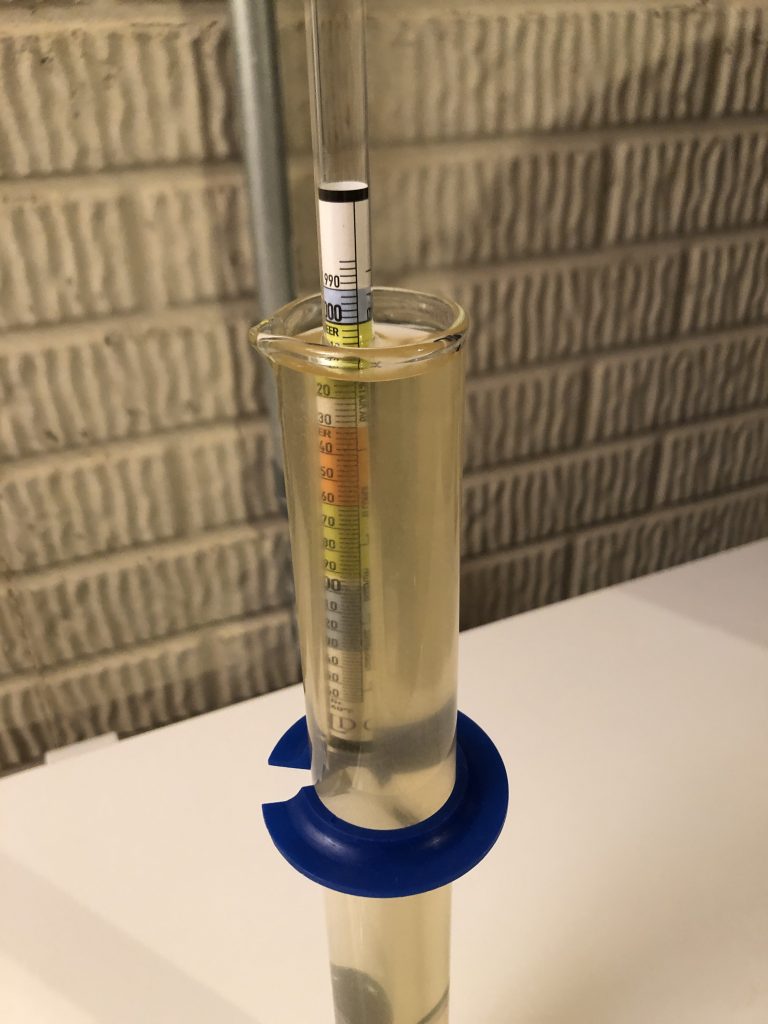
So how does an American Lager taste that was fermented very warm?
Tasting Observations
I’ll be honest, I wasn’t quite sure what to expect with this batch. An American Lager yeast fermented warm in the upper 60’s, pushing 70 degree’s, wasn’t part of my plan.
Surprisingly, it wasn’t too bad. Now granted it wasn’t what I set out to brew, but it was absolutely drinkable.
The beer didn’t have that clean, crisp taste that one would expect from an American Lager. It was pretty close, but there was definitely a hint of esters that was out of place in this style.
It’s almost as if I brewed up an American Ale using lager yeast.
Did it taste like your typical Bud, Miller, or Coors? Not so much. Although it was pretty tasty and crushable. It was so close! If it didn’t have those damn esters, I would have nailed it.
I even shared some with my in-laws, who absolutely love Miller Lite, and they really thought this was a good beer. So much so that we drained a few pitchers together.
Would I brew an American Lager using yeast that was fermented warm again? Definitely not! The esters were out of place.
Moral of the story… If you happen to be brewing an American Lager, ensure you’ve got some temperature control for your fermentation. Otherwise you may just end up with an Ale brewed with Lager yeast.
Cheers…
I ferment them warm under pressure in a fermentasaurus, this suppresses the esters really well.
Haven’t tried fermenting under pressure, but it is something I want to play around with. Just set up one of my corny kegs to use as a fermenter, so I’ll have to give this a shot. Thanks for the feedback.